Nodejs Alternative: The best way to scrape data
WebscrapingAPI on Oct 04 2022
Node.js is a popular JavaScript runtime environment. We must choose another alternative when things don’t work. If you are looking for the Best Alternative Nodejs, check out the list given to see which one will solve your business requirements.
We all know that Node.js has a good market reputation, bringing excellent solutions for technological problems and business requirements. It was initially released in 2009 to build many programming scripts and still runs with the same phase.
You may think that many other programming languages can also solve the technological problems in the market, but Node.js has some previous experience in dealing with problems involved with heavy platforms.
Why is Node.js so popular?
Do you know that companies like PayPal, Tumblr, Netflix, GoDaddy, eBay, LinkedIn, Reddit, and others use Node.js to build their platform on the web?
Developers gained knowledge of this programming syntax and utilised the entire JavaScript code to make things easier for client requirements. Of course, they faced many problems while building massive projects and high-load platforms, but finally, they were the winners.
Now the number of companies has increased tremendously along with the increase in programming languages and technological requirements. So, let’s first see What Node.js is and then go through the Top 10 Best Node.js Alternatives list.
What Is Node.js?
Node.js is an open-source backend JavaScript runtime environment that runs on the V8 engine and executes JavaScript code outside a web browser without using the internet. Sometimes it requires an internet connection to run specific output-oriented results on the browser.
It is also famous for frontend and backend environments, which program complex tasks in event-driven sensors. To explain to you clearly, it simply uses JavaScript to process the required job on the client-side and server side.
Node.js is free to use and executes seamlessly on various platforms like Windows, Linux, Unix, Mac OS X, and other operating systems. It is highly used for traditional, scalable network applications, websites, and API Services.
Uses of Node.js
The applications Node.js create are data-enriched, practical, and light weighted, extending a range of devices. It will send the request to the server without any input request served to it. Node.js applications include single-page apps, data streaming apps, and API-based apps.
Node.js offers a single-thread process from tens to thousands of connections in parallel. It generates dynamic page content and collects the data to perform adding, modifying, and deletion of data in the database.
Building the program on the server-side, it empowers developers to use JavaScript to write the command lines. It uses only a single programming language for the client and server sides to build a stable platform using a unified language.
Node.js Features
- Coding with Node.js will effectively increase the application's performance.
- Can work with JavaScript with ease and effectiveness using reusable code.
- Node.js program script is highly capable of Asynchronous and event-driven.
- Code executes within seconds and can produce high-speed data streaming.
- Capable of managing multiple requests at a time.
- Easy development procedure with complete scalability and single-threaded.
- Node.js is a cross-platform built with consistent source code, runtime environment and no buffering.
List of Top 10 Best Node.js Alternatives
Alternative Nodejs has many options to create new technologies using the latest programming languages. But you need to choose the alternatives which fulfil your requirement. We suggest the Best Scripting Languages for creating Web Scraping Tools.
These programming languages can meet your requirement, but before that, you must ensure that your laptop has a suitable OS, RAM, and processor to support the software.
- ASP.NET
- Deno
- Ext JS
- Ceylon
- AngularJS
- Rebol
- Elixir
- Ruby
- Perl
- WebScrapingAPI
1. ASP.NET
ASP.NET is an open-source that offers real-time development of complex API, creation of dynamic web pages, and web-based applications, and is used in Microservices. Many controls like buttons, text boxes, and forms are integral to this server-side technology.
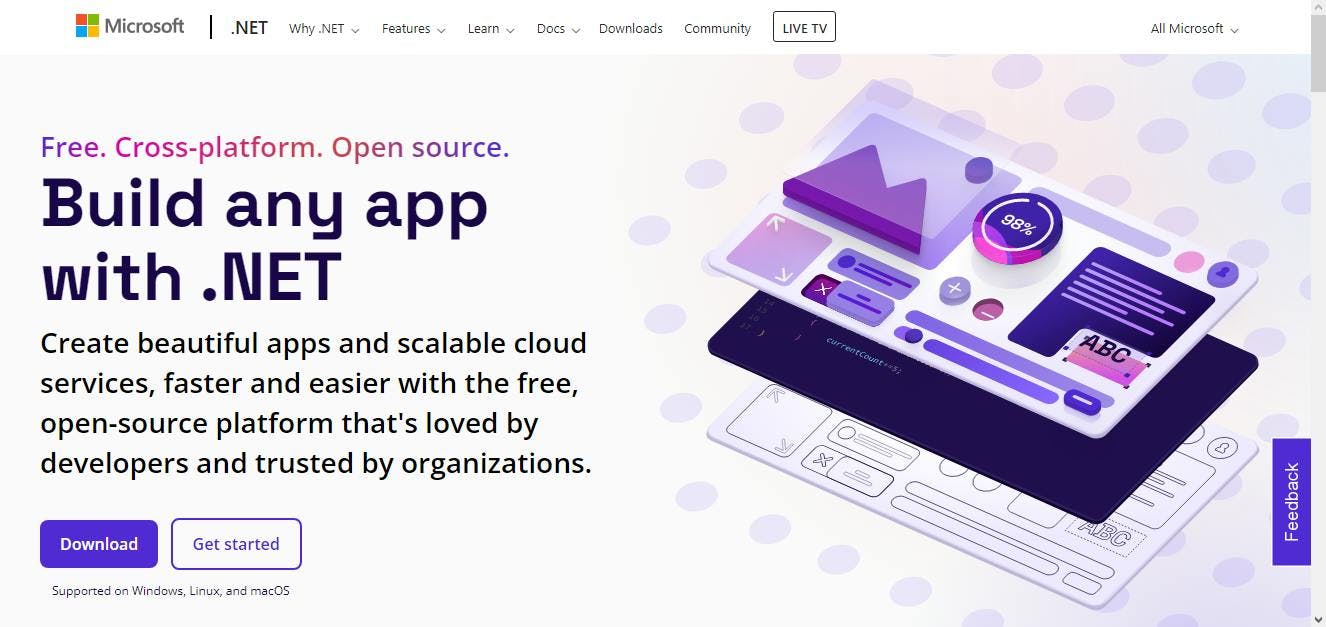
It is a server-side web app framework, Powered by Microsoft, which empowers developers to create interactive and data-based applications over the Internet. It is a free framework that best uses HTML, CSS, and JavaScript for creating websites and APIs with the help of Web Sockets.
Features
- Programming syntax is simple and easy to understand.
- Maintaining Service-oriented architecture is easy.
- Code Management procedures are very effective.
- Integrates easily with websites made with HTML, CSS, and JavaScript.
- There are many filters and library files available for Node.js to support stability.
- The platform created using Node.js remains constant and supports dynamic websites.
2. Deno
Deno is a free, open-source, secure runtime for JavaScript and TypeScript. You can notice that it is created using Google’s runtime engine for JavaScript, Rust, and Tokio. It is an advanced level of programming designed to solve significant issues in development.
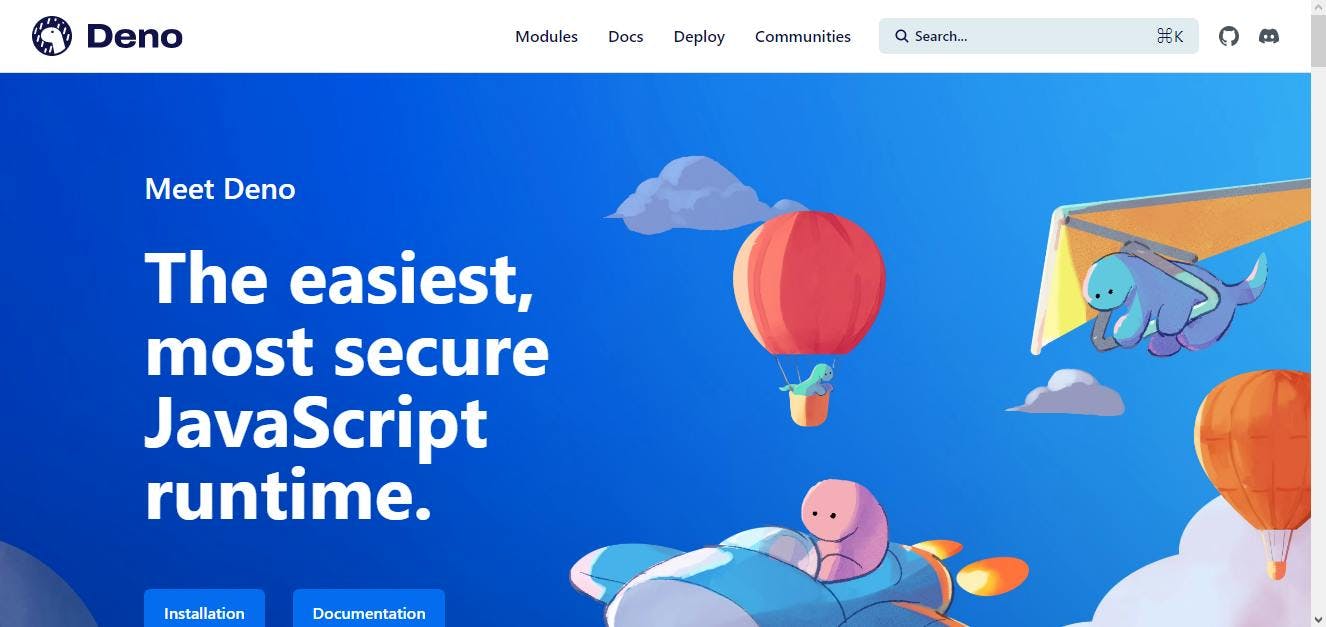
It is designed so that the runtime cannot access the network, file system, or scripts. Deno loads the modules through URLs just like the browsers do. It allows the developers to bundle the entire code into a single file to use as a Node.js Alternative.
Features
- Supports TypeScript without configuration files.
- Compatible with the system browser or application browser.
- Performs enhancement and optimization techniques over compilation.
- JavaScript and TypeScript are highly secured during runtime.
3. Ext JS
Sencha Ext JS is another Best Alternative to Node.js because it is a popular JavaScript application framework used to create interactive, data-rich, and cross-platform web applications with the help of DOM scripting technologies DHTML and Ajax.
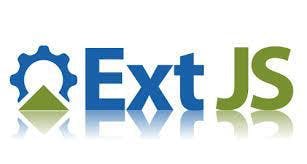
It creates single-page applications for any updated device, so Ext JS is a unified component framework. It includes 150 well-tested and pre-integrated UI components like grids, menus, toolbars, trees, windows, D3 adaptors, and other high-performance tools.
Features
- Enriched UI with cross-browser compatibility.
- You can create desktop and mobile applications quickly.
- Empowers developers with a great user experience.
- You can use this on all kinds of browsers.
- Increases productivity between the developers and testers.
- Based on MVC, MVVM architecture.
4. Ceylon
Ceylon is one of the Best Multipurpose programming languages with a structure like C# and Java. An excellent code is created using its organised packages and modules with the strong support of modular repositories. This software can be the Best Alternative to Nodejs.
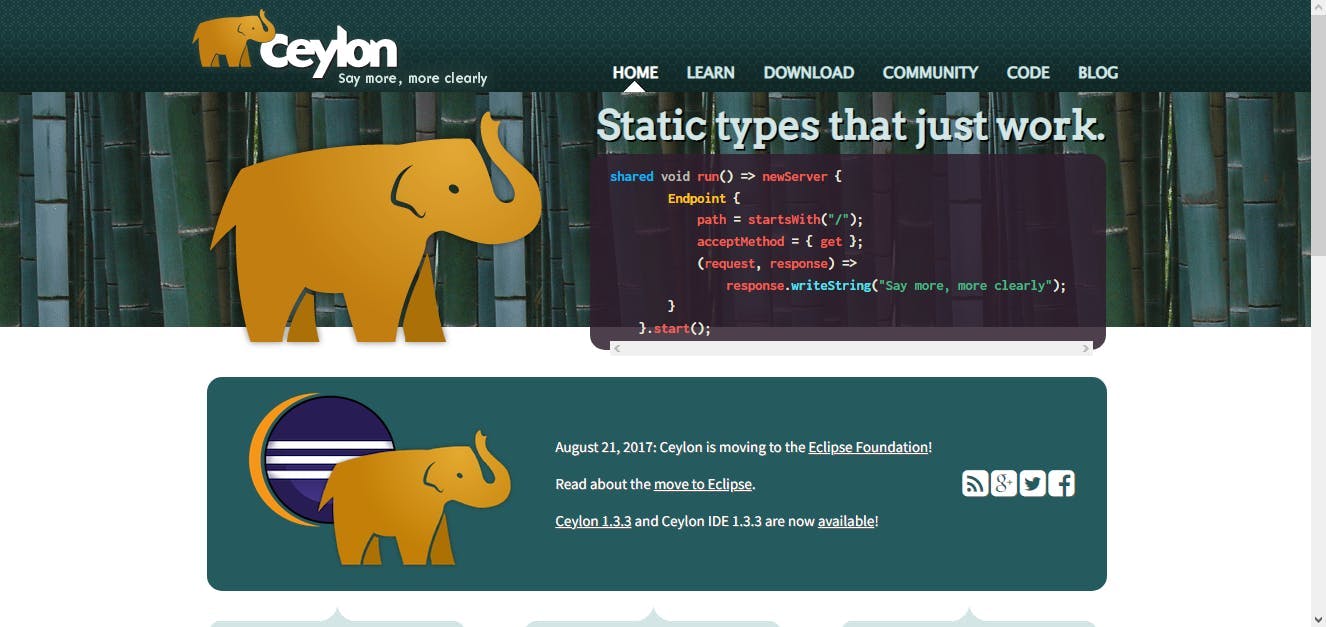
It is an object-oriented language which is statically typed with a blocked structure. It supports cross-platform compatibility and allows developers to write large lines of code. There is a comprehensive type of checking by the compiler.
Features
- Compatible with modular and cross-platform.
- Mainly, it uses cross-platform APIs for all tasks.
- Consist of simple generics and platform libraries.
- Compatible with all kinds of operating systems.
- Open-source with object-oriented programming.
5. AngularJS
AngularJS is an open-source web and mobile application framework powered by Google. It has been decisive in enabling the development and testing of apps with MVC and MVVM architecture suitable for single-page applications which are easy to understand.
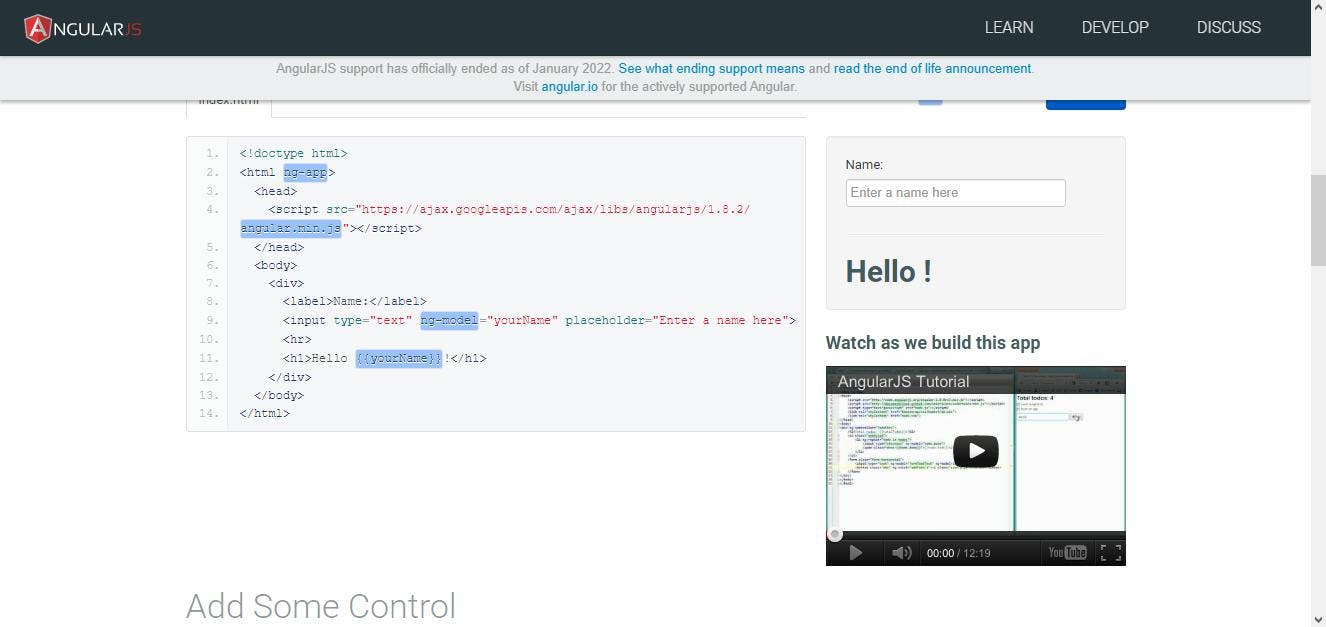
Alternative Nodejs comes up with great features. It allows you to use HTML for your template language and receive no additional updates, including security patches. It collides with third-party libraries and can be added to HTML pages with a script tag.
Features
- Quality-driven Agile-based approach to accomplish the tasks.
- Due to its Customised widget development, it has two-way data binding and reusability.
- The simplistic coding method includes Plug and plays components.
- Other features include Dependency injection, high-speed performance, and deep link.
6. Rebol
Rebol is a popular cross-platform programming language which is highly used for data exchange and network communication. It is mainly used to program client- and server-based internet applications, databases, multimedia apps, and other utilities.
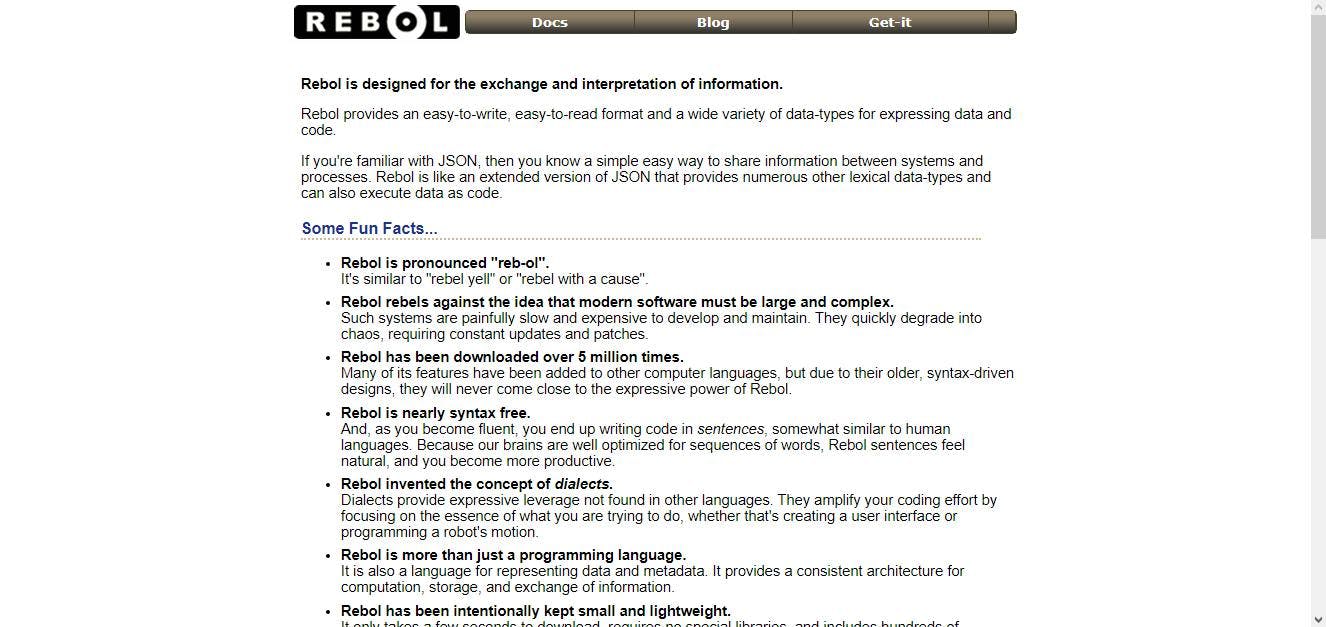
Files Transfer, Archiving files, and synchronization are effortless and quick. It is a secure data creation, exchange, storage, and retrieval platform. It is considered to fit for smaller domains due to its multi-paradigm approach, different typing disciplines and data types.
Features
- No need for a web browser, and it has a fast installation process.
- Easy upgrades are available for easy distribution, and it is platform-independent.
- Simple to use and learn Distributed computing.
- Multi-paradigm and dynamic.
7. Elixir
Elixir is another Best Alternative to Node.js, which is built with dynamic functional language for creating maintainable and scalable applications. Since the code is easily customizable, Elixir created scalable applications using Erlang programming.
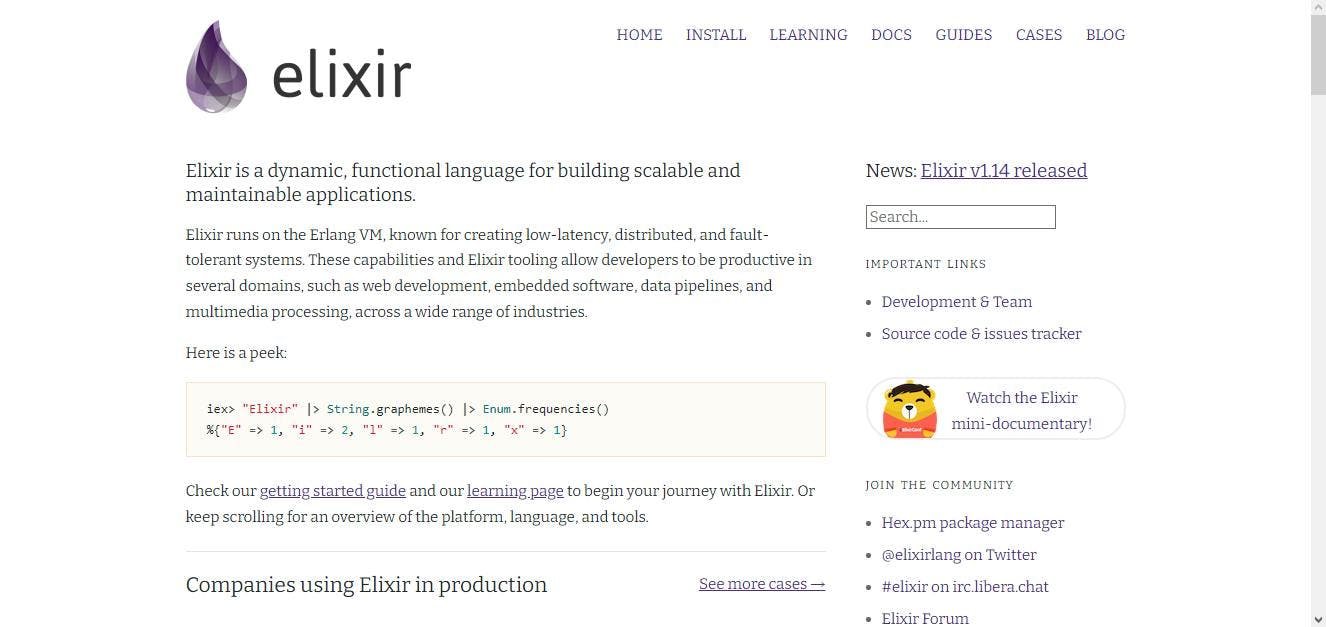
It is one of the best suitable functional languages for creating multiprocessor architectures. There is valuable resource management where multiple processes execute simultaneously with equal efficacy.
Features
- Syntax similar to Ruby Language
- Possess Functional and dynamic typing
- Highly effective in implementing business logic
- Light-weight threads of execution.
- Created on top of Erlang VM and has clear & flexible syntax.
8. Ruby
Ruby is another open-source, widespread, interpreted programming language that has been owned for many years and has a great fan following. This language will make you feel like Python because it covers prototyping, POC, and data analytics applications.
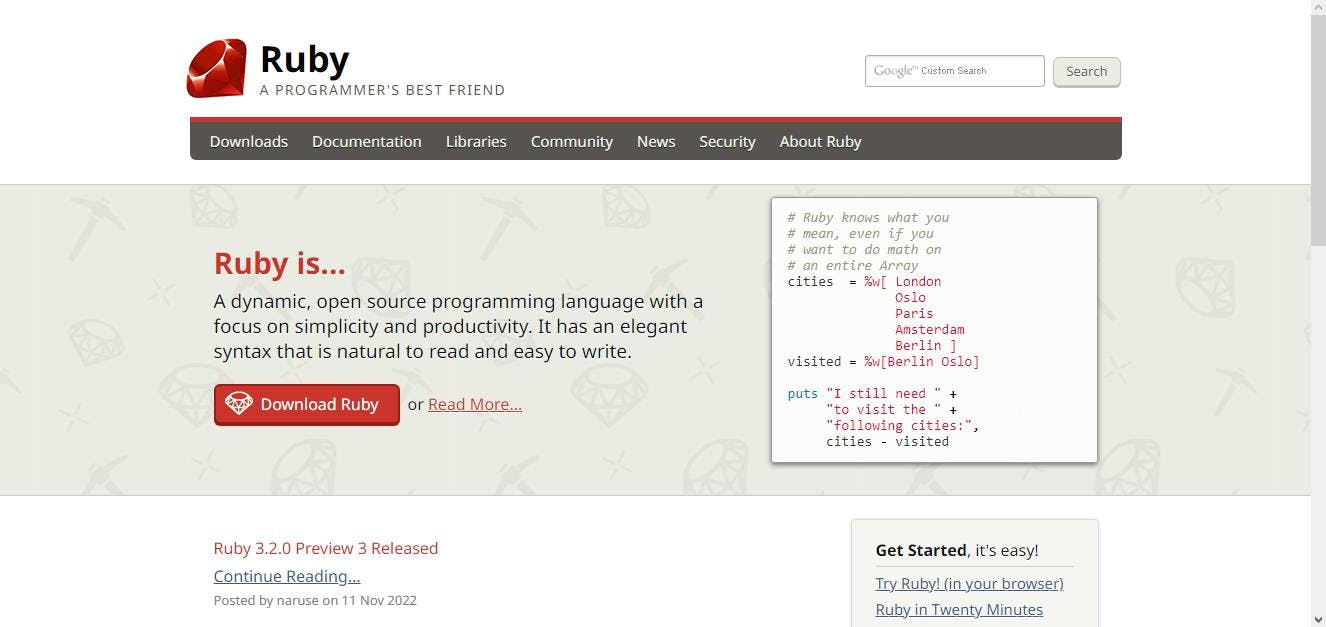
It is used in all application development platforms like frontend, backend, and web development. You can notice that a high-level syntax is used; hence, it is called interpreted language rather than a compiled language.
Features
- Object-oriented language
- Server-side scripting language
- Since it is open-source, you can access data for free
- Exceptional handling, practical, and artful language
- Associated with the Ruby on Rails framework
- General purpose interpreted language
- Dynamic and duck typing
9. Perl
Perl is a general-purpose, interpreted, and dynamic programming language that creates maintainable and scalable applications. If you are looking for a programming language that suits exactly like Node.js, then I think you will get it by the end of this list.
It offers its users a strong text processing capability, similar to shell scripting, C/C++ interface and SED. PERL refers to a strong family of two programming languages which are highly competent and feature-enriched language comprises Perl and Raku.
It is expendable with multiple modules that are accessible globally and offers multiple work segments. Alternative Nodejs is open-source and available on the Internet.
Perl is a flexible and powerful language used primarily for text manipulation, web development, system administration, and GUI development. Perl is a flexible and powerful language used primarily for text manipulation, web development, system administration, and GUI development.
Features
- General-purpose, dynamic, interpreted, and cross-platform
- Mission-critical with text manipulation
- Best User Interface similar to C/C++
- Robust, Stable, Portable, and Unicode support.
- Data integration with third-party systems.
- Procedural and functional
10. WebScrapingAPI
Now, the name isn’t anything fancy. But don’t let that fool you because there is rarely any other tool that can do more than what WebScraping API can. To build a platform or an application, you need a scripting language, but WebScrapingAPI is a ready-made tool for Web Data Scraping.
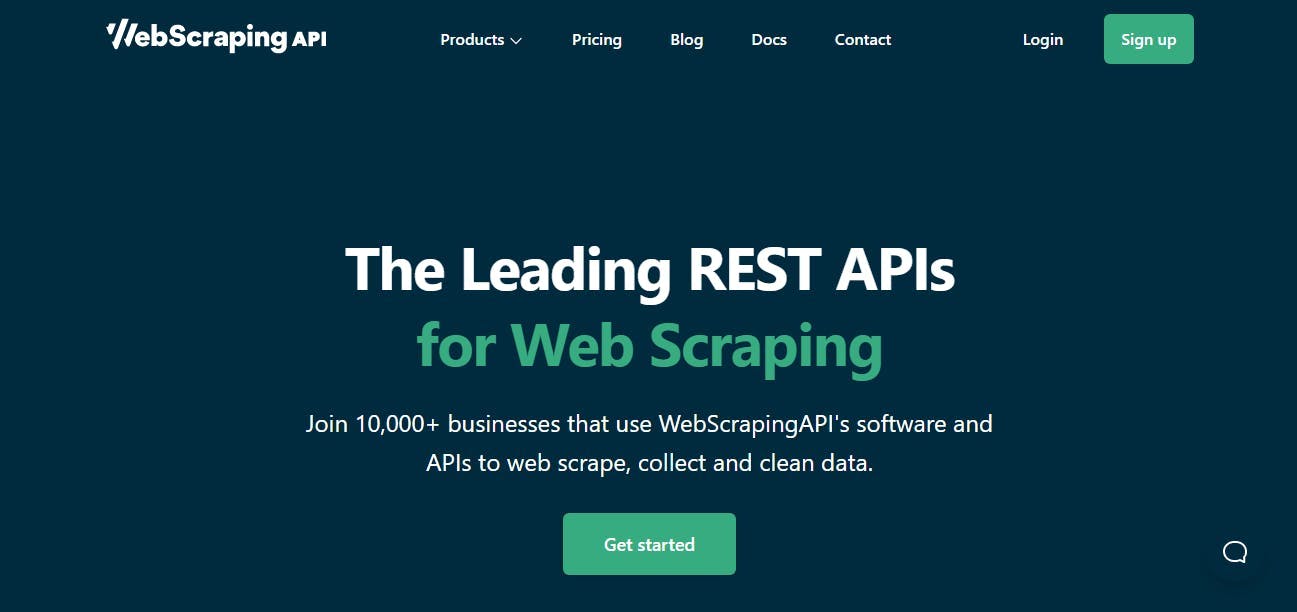
You can make HTTP requests and send API calls to retrieve the data from the desired website. Furthermore, it is a straightforward and efficient REST API interface for scraping web pages at scale. It enables users to scrape websites effortlessly and extract HTML code.
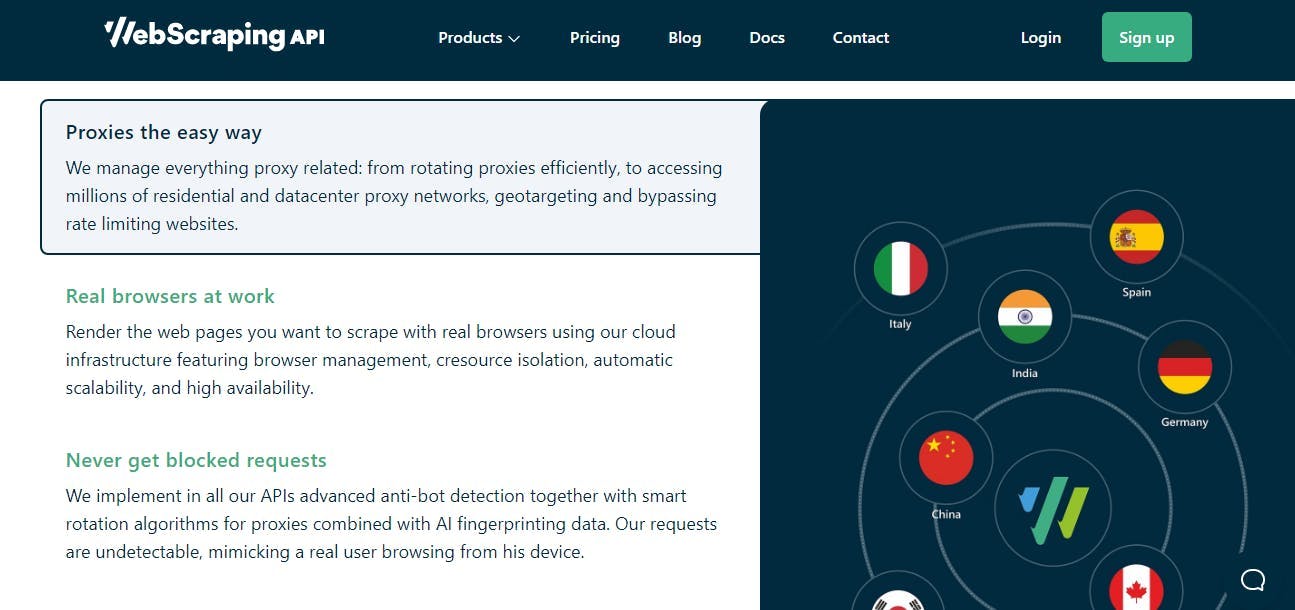
Features
- Automatic Scaling, 24/7 Monitoring, Mass Web Crawling, and High-Speed Obsessive Architecture
- Ultimate Javascript Rendering
- Easy API call Customization using various development languages
- Collect Data from any Webpage
- Easy to use and easy to customise
- Web Scraping with lightning speed
- Powered by Amazon Web Services
- Millions of API Requests every month
- 100+ Rotating Proxies with Real-time unique ISPs
- Offers Unlimited Bandwidth with rates up to 100Mbps
Why choose WebScrapingAPI to collect Web Data?
From the above list, every scripting or programming language will have drawbacks. Many say that we can find alternatives to anything on the Internet, as does Nodejs. But, you don't see any difficulties in WebScrapingAPI because it is already built with a dynamic program.
I recommend WebScrapingAPI because it offers straightforward solutions and has the best user interface to scrape data easily. You can send HTTP requests to scrape the data using API calls.
It accomplishes various business requirements which support the above scripting and programming languages to build solid and stable platforms like web and mobile applications.
Furthermore, the monthly fee is just $49. I'm smitten by how quickly it moves. Thanks to the use of a global rotating proxy network, it already has over 10,000 users. For this reason, I suggest using WebScrapingAPI to gather data.
News and updates
Stay up-to-date with the latest web scraping guides and news by subscribing to our newsletter.
We care about the protection of your data. Read our Privacy Policy.

Related articles
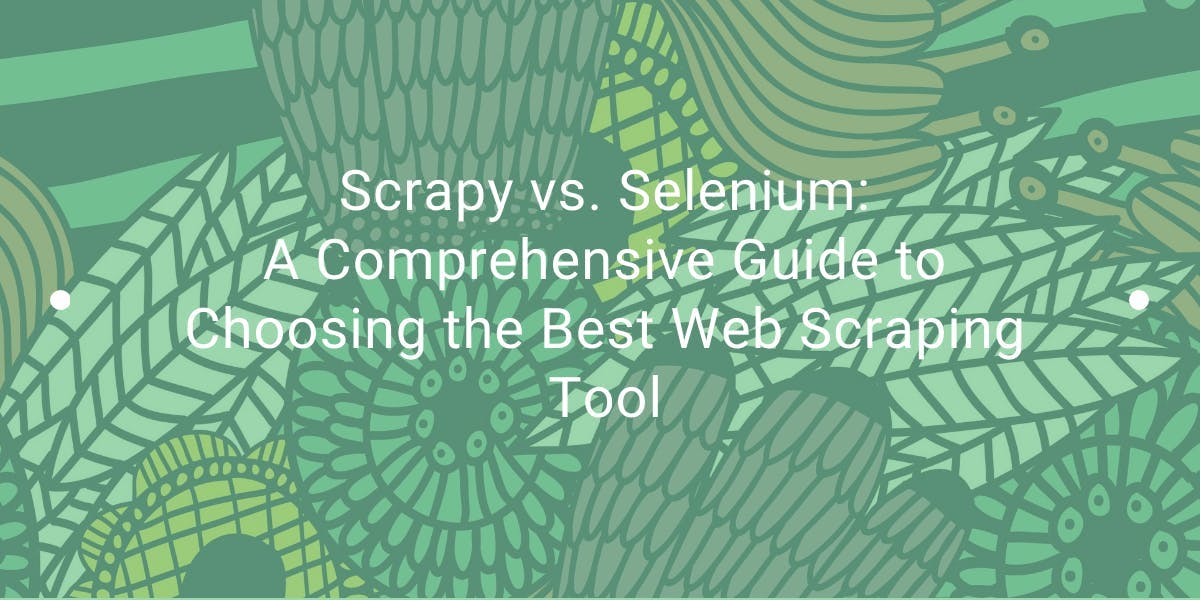
Explore the in-depth comparison between Scrapy and Selenium for web scraping. From large-scale data acquisition to handling dynamic content, discover the pros, cons, and unique features of each. Learn how to choose the best framework based on your project's needs and scale.
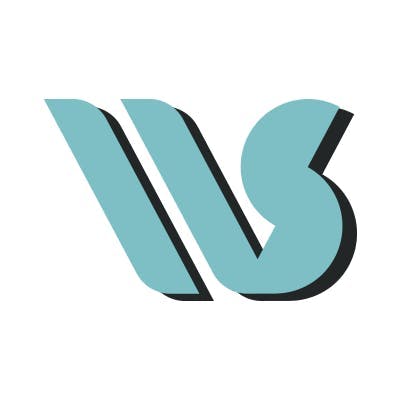
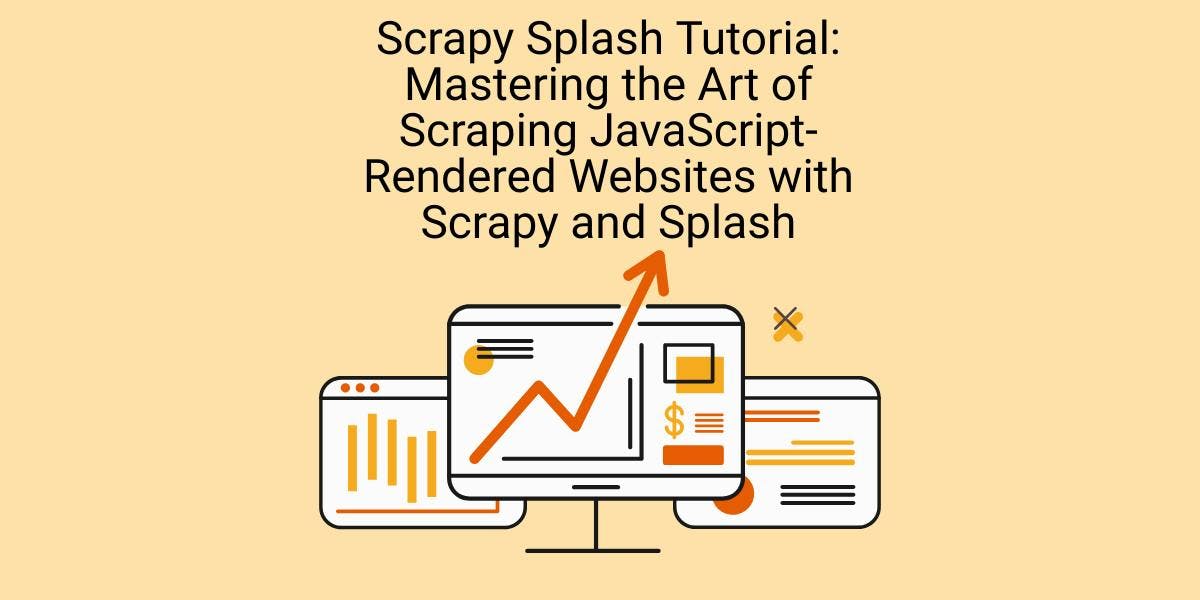
Learn how to scrape dynamic JavaScript-rendered websites using Scrapy and Splash. From installation to writing a spider, handling pagination, and managing Splash responses, this comprehensive guide offers step-by-step instructions for beginners and experts alike.

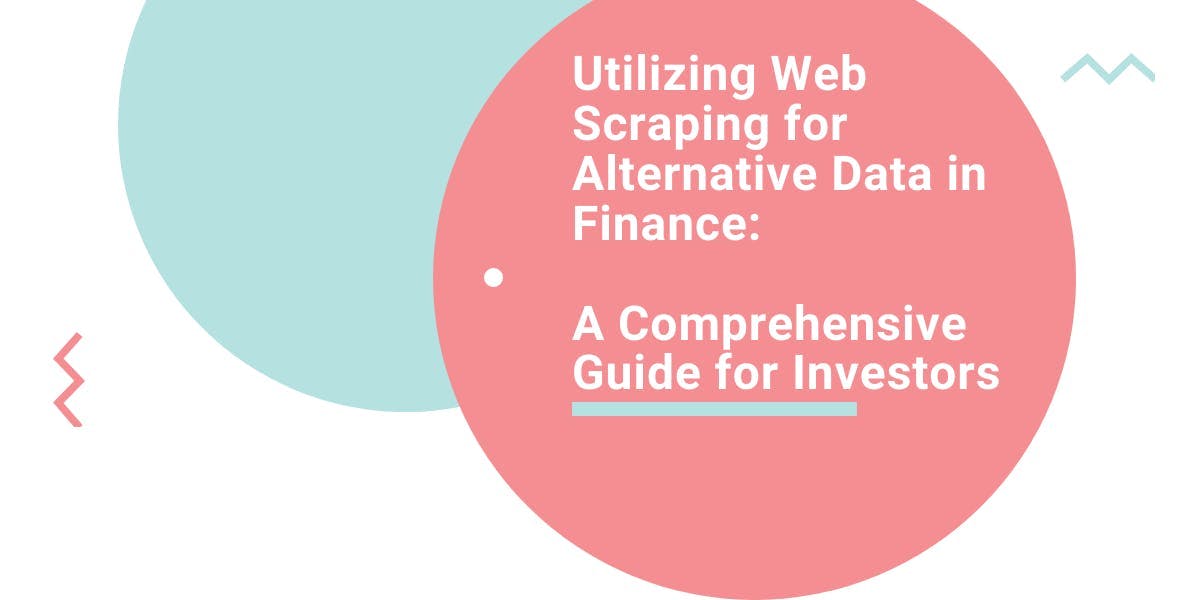
Explore the transformative power of web scraping in the finance sector. From product data to sentiment analysis, this guide offers insights into the various types of web data available for investment decisions.
